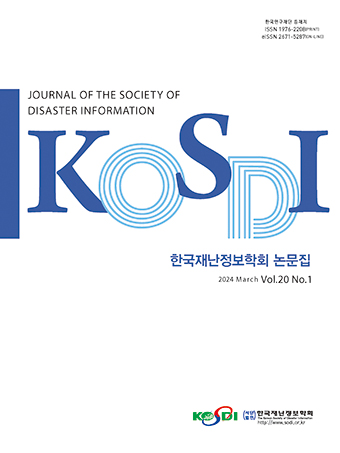Original Article
Abstract
References
Information
Purpose: To identify internal self ignition and ignition caused by external flames in energy storage rooms, and to analyze the difference between ignition due to overheating and ignition caused by external heat sources. Method: membrane melting point measurement, battery external hydrothermal experiment, battery overcharge experiment, comparative analysis of electrode plate during combustion by overcharge and external heat, overcharge combustion characteristics, external hydrothermal fire combustion characteristics, 3.4 (electrode plate comparison) / 3.5 (overcharge) /3.6 (external sequence) analysis experiment. Result: Since the temperature difference was very different depending on the position of the sensor until the fire occurred, it is judged that two temperature sensors per module are not enough to prevent the fire through temperature control in advance. Conclusion: The short circuit acts as an ignition source and ignites the mixed gas, causing a gas explosion. The electrode breaks finely due to the explosion pressure, and the powder-like lithium oxide is sparked like a firecracker by the flame reaction.
연구목적 : 에너지 저장실의 외부 화염에 의한 내부자기 점화 및 점화를 식별하고, 과열로 인한 점화와 외부 열원에 의한 점화의 차이를 분석하는 것이다. 연구방법 : 분리막 녹는점 측정, 배터리 외부 수열 실험, 배터리 과충전 실험, 과충전과 외부수열에 의한 연소 시 전극 판 비교분석, 과충전 연소 특징, 외부수열 화재 연소특징, 3.4(전극판 비교)/ 3.5(과충전)/ 3.6(외부수열) 분석 실험을 하였다. 연구결과: 화재 발생 시까지 센서의 위치에 따른 온도 차이가 극심했음으로 기존처럼 한 모듈 당 온도 센서 두 개로는 측정값이 부족해 온도제어를 통한 화재를 사전에 방지할 수 없다고 판단한다. 결론: 단락이 점화원으로 작용하여 혼합가스에 착화돼 가스폭발이 발생하고, 폭발 압력에 의해 전극이 잘게 파손되며, 가루형태의 리튬산화물이 불꽃반응에 의해 폭죽과 유사한 불꽃이 분출되었다.
- Park, K.M. (2018). A Study on the Fire Risk of ESS through Fire Status and Field Investigation.
- Jung, C.D. (2018). A Study on the fire pattern of Lithium-ion · polymer Battery
- Lee, H.S. (2015). Explosion and Fire Risk of Mobile Phone Batteries, Hoseo University.
- Shin, S.k. (2018). A Study on Actual Survey and Establishment of Related Standards for Responding to ESS Fire.
- Lee, B.J. (2017). A study on Explosion and Fire Risk of Lithium-Ion and Lithium-Polymer Battery.10.7840/kics.2017.42.4.855
- Choi, S.D. (2010). Lithium-Ion Polymer Battery Technology for Electric Vehicle Application.
- Kim, K.W. (2018). Analysis of Heat Heneration Characteristics by Indentation of a Lithium-Ion Battery Cell Using Coupled Mechanical-Electrical-Thermal Simulation, Konkuk University Graduate School.
- http://www.firedata.go.kr
- Publisher :The Korean Society of Disaster Information
- Publisher(Ko) :한국재난정보학회
- Journal Title :Journal of the Society of Disaster Information
- Journal Title(Ko) :한국재난정보학회논문집
- Volume : 16
- No :2
- Pages :383-391
- DOI :https://doi.org/10.15683/kosdi.2020.06.30.383




 Journal of the Society of Disaster Information
Journal of the Society of Disaster Information







